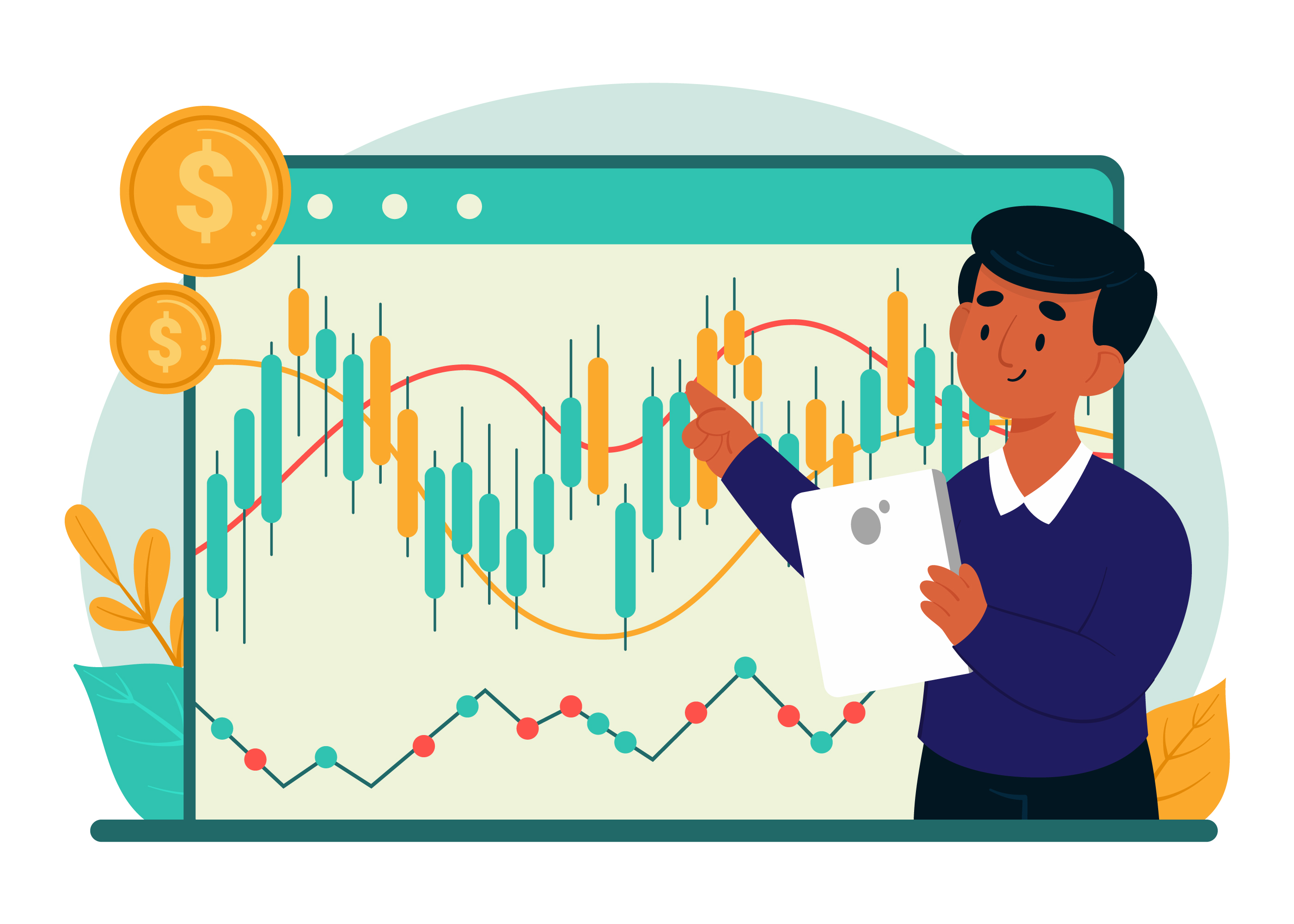Project information
- Category: Basics of Stock Market
- Batch date: 7 August, 2023
- Interested ?: ENROLL NOW
Basics Of Stock Market
- What is a company?
A company is an organization or business entity formed to conduct commercial activities and earn profits.
- How does a company create a share?
A company creates shares by dividing its ownership into equal portions, each representing a unit of ownership in the company.
- Why does a company sell a share?
A company sells shares to raise capital for various purposes like expanding operations, investing in new projects, or reducing debt.
- How does a company enter the market?
A company enters the market by making its shares available for public trading through an initial public offering (IPO).
- Who decides a share price?
The share price is determined by the demand and supply dynamics in the stock market. Buyers and sellers agree on the price through their transactions.
- What is an IPO?
IPO stands for Initial Public Offering, which is the first time a company's shares are offered to the public for trading on a stock exchange.
- What is the company profile?
The company profile provides information about a company's background, history, products, services, financials, and management.
- What is a company promoter?
A company promoter is an individual or group responsible for establishing and promoting the company before it goes public.
- What are the company financials?
Company financials refer to the financial statements like balance sheets, income statements, and cash flow statements, which show the company's financial performance.
- What is SEBI?
SEBI (Securities and Exchange Board of India) is the regulatory authority that oversees the securities market in India.
- What is the issue size?
The issue size is the total number of shares offered for sale during an IPO or a secondary offering.
- What is face value?
The face value of a share is the nominal value printed on the share certificate, which represents the initial value of the share.
- What is an undersubscribed IPO?
An undersubscribed IPO is when the number of shares applied for is less than the number of shares offered for sale.
- What is an oversubscribed IPO?
An oversubscribed IPO is when the number of shares applied for exceeds the number of shares offered for sale.
- How does IPO distribution work?
IPO shares are distributed based on the allocation process, which may consider various factors like retail and institutional demand.
- What is a fresh issue?
A fresh issue is when a company issues new shares to raise capital through an IPO or rights offering.
- What is OFS (Offer for Sale)?
OFS is a mechanism where existing shareholders can sell their shares on the stock exchange.
- Listing & share details
Listing refers to the process of a company's shares being listed and traded on a stock exchange. Share details include key information about the company's shares.
- Volume, prices, bid & ask data.
Volume represents the total number of shares traded during a specific period. Prices are the buying and selling prices of a share. Bid and ask data show the prices at which buyers and sellers are willing to trade.
- What is announcement, meeting & corporate action?
Announcements are formal notifications made by a company to the stock exchange and shareholders. Meetings involve discussions and decisions by the company's management. Corporate actions refer to significant events that impact a company's stakeholders.
- What is pre-market analysis?
Pre-market analysis involves evaluating market data and news before the market opens to identify potential trading opportunities.
- What is inter-market relation?
Inter-market relation studies the relationship between different financial markets and how they influence each other.
- What is post-market analysis?
Post-market analysis reviews market performance after the trading day has ended to assess trading strategies and outcomes.
- How to do intraday trading?
Intraday trading involves buying and selling financial assets within the same trading day to profit from short-term price movements.
- How to do investment trading?
Investment trading involves buying and holding financial assets for the long term with the goal of capital appreciation and generating passive income.
Technical Analysis
- What is Technical Analysis?
Technical Analysis (T.A.) is a method used to evaluate and predict financial asset price movements based on historical market data, mainly charts and patterns.
- Why do people believe in T.A.?
Many believe in T.A. because it helps identify trends, patterns, and potential entry/exit points, assisting in making informed trading decisions.
- Introduction to Basics of T.A.
Basics of T.A. involve analyzing historical price data to forecast future price movements and understand market sentiment.
- What is a Candle?
A candlestick represents the price movement of an asset during a specific time period.
- How to Read Candle Charts?
Candle charts display the open, high, low, and close prices for a specific time period, helping traders analyze price trends and patterns.
- What are Line & Bar Charts?
Line and bar charts are alternative ways to represent price data and help in identifying trends and patterns.
- Candlestick Patterns
- Doji
- Hammer
- Shooting Star
- Hanging Man
- Tweezer Top
- Bullish & Bearish Engulfing
- What are Bullish and Bearish Candle Patterns?
Bullish and bearish candle patterns indicate potential trend reversals or continuation.
- Technical Indicators
- RSI (Relative Strength Index)
- MACD (Moving Average Convergence Divergence)
- Stochastic Oscillator
- Moving Average
- How to Read Charts?
Understanding chart patterns, candlesticks, and technical indicators to make informed trading decisions.
Future Market and Risk Management
- What is the Future Market?
The future market is a financial market where participants can trade standardized contracts for the purchase or sale of assets at a predetermined price and date in the future.
- Future Market Framework
The future market operates on an exchange where buyers and sellers trade futures contracts based on specific assets.
- How Margin Trading Works
Margin trading in the futures market involves borrowing funds to leverage trading positions.
- How to Manage Risk in the Future?
Learn strategies to mitigate risk, such as stop-loss orders and position sizing.
- What is a Hedging Strategy?
Hedging strategies are used to offset potential losses by taking opposite positions in related assets.
- What is Scrip Hedging?
Scrip hedging involves using futures contracts to hedge specific stock holdings.
- What is a Stop Loss Strategy?
Stop loss strategy involves setting predefined exit points to limit potential losses.
- What is Beta & Nifty PE?
Beta measures an asset's volatility compared to the market, while Nifty PE is the price-to-earnings ratio of the Nifty 50 index.
- What is the Future & Spot Market?
Understand the difference between the future market and the spot market and how they interact.


